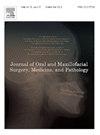整合素α11:关键信号通路与肿瘤动力学
IF 0.4
Q4 DENTISTRY, ORAL SURGERY & MEDICINE
Journal of Oral and Maxillofacial Surgery Medicine and Pathology
Pub Date : 2024-12-19
DOI:10.1016/j.ajoms.2024.12.012
引用次数: 0
摘要
本文综述了整合素α11 (Integrin α11, ITGA11)这一重要的细胞粘附受体参与多种生物过程的研究进展。ITGA11由α和β链组成,形成异源二聚体,其特定亚型作为天然胶原的主要受体。了解其结构、生理和表达,特别是在包括癌症在内的病理条件下普遍存在的活化成纤维细胞中,是至关重要的。ITGA11的生理分布延伸到发育中的软骨和胚胎组织,暗示其在各种发育过程中的作用。在癌症等病理情况下,ITGA11的表达与预后不良有关。它通过调节胶原组装和基质重塑,特别是通过TGF-β和Hedgehog信号通路,显著影响肿瘤微环境。此外,ITGA11通过PI3K/AKT和PDGFBR/JNK等相互关联的途径促进癌症进展,影响肿瘤的生长、侵袭和转移。了解ITGA11的作用为癌症治疗干预提供了有希望的途径,使其成为肿瘤研究和临床实践的关键靶点。这一综述强调了揭示ITGA11的分子机制对加强癌症诊断和制定有效的治疗策略的重要性。本文章由计算机程序翻译,如有差异,请以英文原文为准。
Integrin α11: Key signaling pathways and tumor dynamics
This review provides a comprehensive exploration of Integrin α11 (ITGA11), a crucial cell adhesion receptor involved in diverse biological processes. Composed of α and β chains, ITGA11 forms heterodimers, with specific subtypes acting as primary receptors for native collagens. Understanding its structure, physiology, and expression, particularly in activated fibroblasts prevalent in pathological conditions including cancer, is essential. ITGA11's physiological distribution extends to developing cartilage and embryonic tissues, implicating its role in various developmental processes. In pathological conditions like cancer, ITGA11 expression is associated with poor prognoses. It significantly influences the tumor microenvironment by regulating collagen assembly and matrix remodeling, particularly through pathways such as TGF-β and Hedgehog signaling. Moreover, ITGA11 contributes to cancer progression via interconnected pathways like PI3K/AKT and PDGFBR/JNK, influencing tumor growth, invasion, and metastasis. Understanding ITGA11's role offers promising avenues for cancer therapy interventions, making it a key target in oncology research and clinical practice. This review underscores the importance of unraveling ITGA11's molecular mechanisms to enhance diagnostics and develop effective therapeutic strategies against cancer.
求助全文
通过发布文献求助,成功后即可免费获取论文全文。
去求助
来源期刊

Journal of Oral and Maxillofacial Surgery Medicine and Pathology
DENTISTRY, ORAL SURGERY & MEDICINE-
CiteScore
0.80
自引率
0.00%
发文量
129
审稿时长
83 days
 求助内容:
求助内容: 应助结果提醒方式:
应助结果提醒方式:


